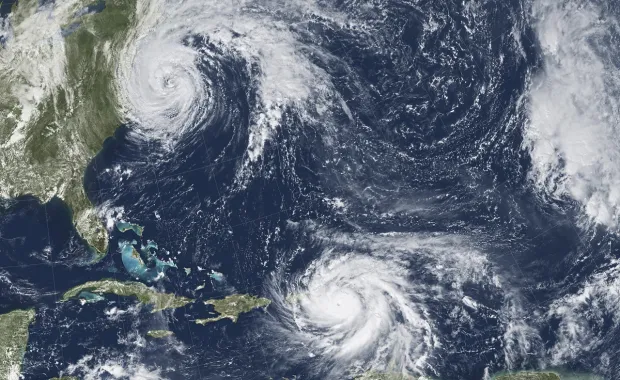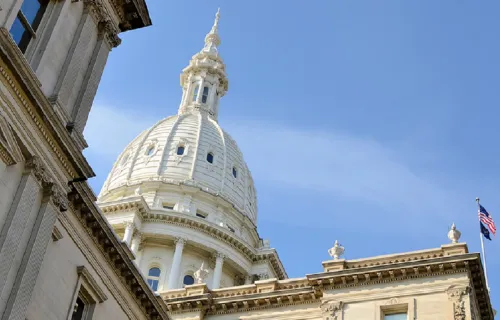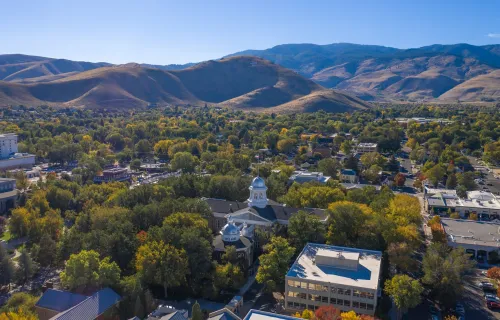Having lived through some major hurricanes in Puerto Rico, I have first-hand understanding of what good (and not so good) recovery efforts look like. As an IT consultant, I have developed a different perspective, understanding that access to reliable data can be as crucial to recovery efforts as electricity and water.
Each year, as we enter hurricane season in the Atlantic Ocean, government leaders look to the National Disaster Recovery Framework (NDRF) to help them manage the different stages of a disaster. How well an organization manages the four phases - mitigation, preparedness, response, and recovery – is increasingly tied to their ability to use data effectively to make better decisions and create greater visibility for all stakeholders. In this blog, I’ll discuss the impact of data around one specific disaster – hurricane María – from both a personal and professional perspective.
Silence and Darkness: Unveiling Challenges and Vulnerabilities
When hurricane María made landfall in Puerto Rico on September 20, 2017, it caused massive casualties and severe damage to the infrastructure, economy, and community. The devastation blanketed the island in its entirety. Our communications were drastically limited. We were not only disconnected from the outside world, but also between neighboring communities and family members.
After the storm, we were paralyzed for months with a total loss of power island wide. While the eyes of the rest of the world were on us, witnessing the destruction, in Puerto Rico there was silence and darkness. The island struggled to meet basic human needs. The people of Puerto Rico were helpless, but we never lost our hope. We became more resilient. After all, we know that after every storm there is always calm and with it the opportunity for recovery.
Each individual experience of living through the hurricane constructs and contributes to our collective experience as a country. Knowing how the wind, rain, and sea reacted in different regions of the island provided us a perspective of the magnitude of the damages. After any disaster, the success or failure of the recovery process depends on the previous state of the infrastructure, economy, and community. Hurricane María unveiled the precarious, fragile, and vulnerable conditions of the island, making the recovery process a challenging one. Having the experience of living through a disaster, then working for the government, and now being a Disaster Recovery Consultant provides me a unique perspective and understanding of the disaster recovery process, needs, and solutions.
Role of government in the road to recovery
After experiencing the devastation of any major natural disaster, the government is overwhelmed. They need help to start the immediate emergency response, to plan a long-term recovery process, and to implement risk mitigation solutions to avoid further damages in the future. After any disaster or crisis, time is key for an effective emergency response and recovery process. Every day that passes without action increases the complexity and challenges. Power needs to be restored. Access to food, water, and shelter needs to be secured. Roads need to be cleared. Flooded areas and landslides need to be controlled. At the same time, the Federal funds need to be requested to start with the disaster recovery process. Without access to the funds, there is no chance to start the recovery.
Within the NDFR, governments have an active role in managing a disaster. Federal agencies, governments, and partners work together towards the same goal: to manage the disaster recovery successfully and quickly. Governments need partners with experience in handling this type of disaster, to provide the guidance and solutions necessary to expedite the recovery process. Trusted partners help navigate the Federal funding requirements and facilitate the disbursement processes. An effective and transparent recovery process is one of the biggest goals of State and Local Governments after any disaster. How can this goal be achieved?
At 6:30am, my brother called. He was on vacation in Germany when he saw live images of the hurricane on TV. “What is happening? What I am seeing is horrible. Is everything ok?”. At that moment, we had no power and we had spent at the last hour sheltering in the bathroom of our 18th floor apartment. “We just lost a window from one of the bedrooms,” I shouted into the phone, “and a lot of water is coming in. The hurricane just made landfall on the southeastern part of the island; the worst part is not even here. I don’t know what is going to happen…” Those were the last words I said to my brother before losing reception, leaving him anxious and in total suspense.
Marisol's first-hand account of Maria's landfall
Data provides light into the darkness of disaster
Tracking, managing, and executing recovery programs after a disaster produces a large quantity of data. It is valuable information that helps the governments get organized, make informed decisions regarding their daily challenges, and learn from that information. Government organization can implement data management solutions to capture, track, communicate and analyze the data along the four phases of managing a disaster. Managing the data delivers insight into the recovery efforts and helps the different stakeholders comprehend the processes. Among the myriad components of a recovery effort, these are three of the most impactful areas to focus on for data management:
- Program and financial management systems: Capturing and tracking the recovery funds in an end-to-end system provides a tool for governments to manage the disaster recovery more effectively. Collecting the data in a system provides the opportunity to perform further data analysis and improve the processes. It facilitates the traceability of the funds and helps recipients and subrecipients comply with audits and federal regulations. Tracking data in this way can also provide a system that can be leveraged quickly if or when another disaster happens.
- Transparency portals: Websites that communicate and provide visibility of the recovery efforts to the public. They promote the transparency of the movement of the federal funds from allocations to obligations and to disbursements, making the data accessible to everyone. Sharing disaster recovery data with a wider audience helps to create a culture of trust around the distribution of funding. A centralized platform allows governments to continue publishing relevant information regarding the disaster recovery, improving communication, and promoting education on the processes.
- Analytics: Communicating and analyzing data is an essential part of disaster recovery. Data analytics and reporting help visualize the recovery progress and status in an effective way that is easy for all stakeholders to socialize and understand. The reports and interactive dashboards support the day to day programmatic and financial operations. It allows users to identify roadblocks in the complex processes and helps governments to make data-driven decisions about the recovery process. Sharing data is a powerful way to empower governments to manage a disaster effectively.
The road to recovery can be long, but with a solid strategy and smart solutions, governments are empowered, with partners such as CGI, to successfully manage the next major disaster: from hurricanes and earthquakes to global pandemics.
Learn more about how CGI is helping governments with their disaster recovery efforts.





